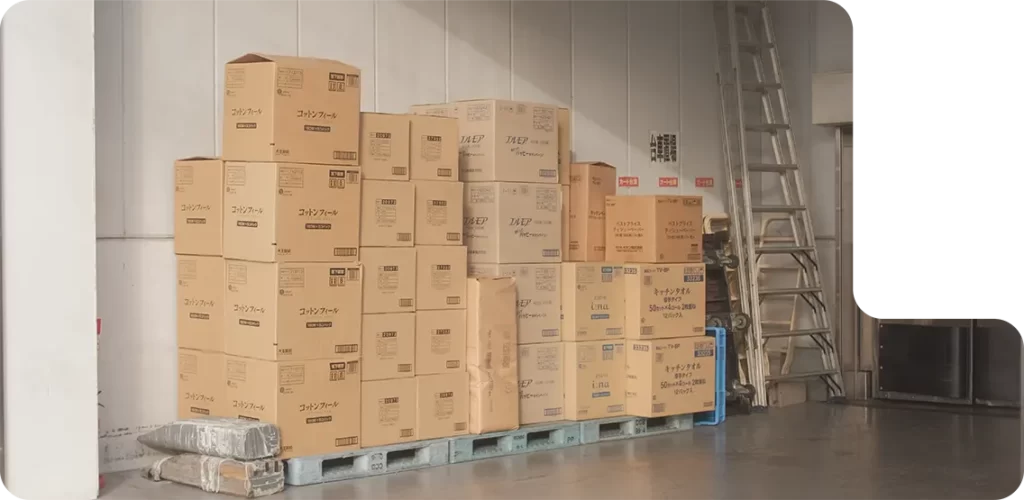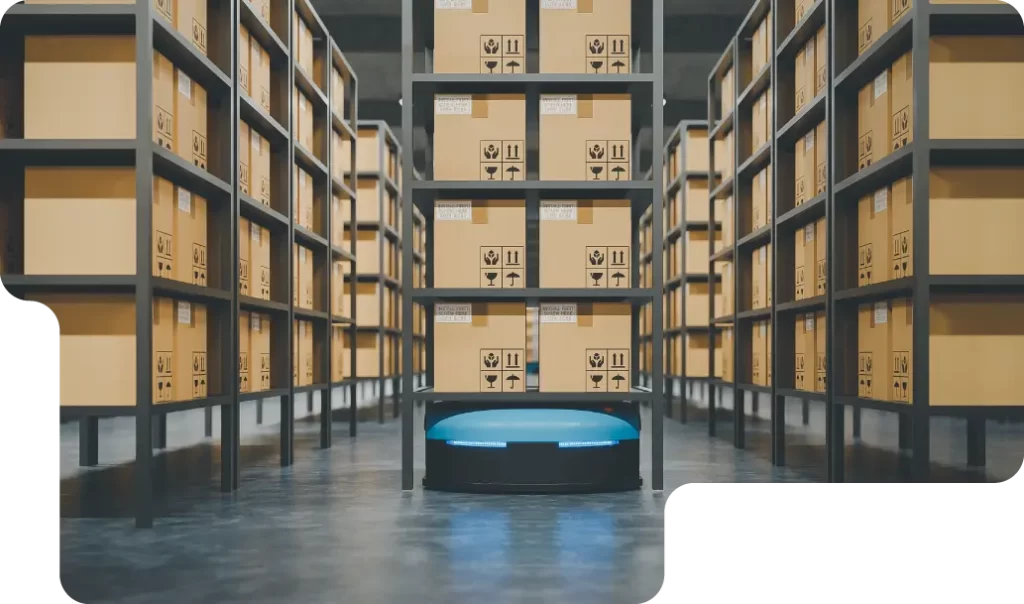Table of Contents
More Inventory Content
Get the latest e-commerce industry news, best practices, and product updates!
Table of Contents
More Inventory Content
Share This
Get the latest e-commerce industry news, best practices, and product updates!
Table of Contents
Share This
More Inventory Content
Get the latest e-commerce industry news, best practices, and product updates!
Inventory is at the center of a business’s operation. It is the most significant and crucial current asset of a business that directly impacts the company’s profitability. In simpler words, inventory is the stockpile of products and goods within a company’s supply and control that are available for sale.
A business substantially depends on its inventory to operate and fill client orders. Keeping inventory is a vital feature of a business’s efficient and effective inventory management. Keeping inventory entails tracking all the inventory operations from their procurement through their end destination or disposal. Let us look into the crucial step of inventory management in detail below.

What does Keeping Inventory mean?
Inventory is the core of a business and a constant moving feature of supply chain management. Keeping inventory comprises the total count of finished products and materials stored along with new batches of inventory entering the warehouse. Therefore, a business must manage inventory and perform periodic checks to ensure the company has the right amount of stock at the right time to fulfill customer orders. Keeping inventory is the maintaining the accurate number of products on hand to minimize any overage or shortage of inventory and other costly issues. Effective inventory keeping allows a business to make most of its assets and avoid product deterioration and expiration.
Areas of Inventory Keeping
Knowledge of the components on an inventory’s shelves is fundamental to inventory tracking and management. The primary areas to monitor in the inventory are:
Supplier Inventory Keeping
Small businesses may create or receive their inventory from a single supplier and store it in a small space. However, as the company expands, the need for more space and assistance will come into play.
Therefore, it is absolutely crucial to accurately track the inventory stored or tagged for shipment at each space and across all suppliers while dealing with multiple warehouses or distribution centers.
Customer Order Returns Tracking
racking inventory for customer returns is also essential to the total inventory balance. Items leaving an inventory are subtracted from the entire inventory count. Accurate monitoring of customer returns helps develop insight into the qualities of the returned products and allows a business to take steps to prevent customers from returning products.
Damaged Products
Similar to customer returns, tracking for damaged products is also crucial. Keeping track of items sold may not accurately show total sales if refunds are issued.
Although certain returned items may qualify for resale, the damaged products can’t be reallocated as current inventory. That means a company has to eat the cost of the product manufactured itself in addition to packaging and shipping expenses.

The Importance of Keeping an Accurate Inventory
A large-scale business inventory experiences a large number of variations in material demand.
However, proper inventory keeping and control protect from the ever-changing markets.
The importance of an accurate keeping inventory is discussed below:
Minimizes The Possibility Of Loss
Proper inventory keeping helps reduce the danger of missing, degraded, or outdated items with frequent inventory checks. In addition, it allows a company to sell slow-moving goods on time at designated market rates with proper stock on hand at all times. This helps in nullifying any obsolete inventory.
Prevents Duplication Of Orders
Efficient Keeping inventory prevents stock orders from being repeated. With constant and controlled reordering, the business inventory can accomplish a distinct purchasing department without the risk of order duplication.
Current Working Capital Management
Keeping inventory is essential for effectively using cash reserves. Proper inventory control aids in accurate materials and operations, resulting in the operating income not stifled by surplus inventory.
Implement An Effective And Efficient Production Schedule
Regular inventory reading can help a company implement customized production models with planned timelines to achieve efficiencies and savings.
Avoids Loss In Sales
Businesses without items on hand are most likely to fail. Keeping inventory benefits both the company and the customer by ensuring timely availability of products and a seamless fulfillment process when needed.
Aids In Price Reductions
Large inventory orders help a company receive frequent rebates over the inventory price. These subsequent price cuts lower the cost of items and improve profit margins for the business.
Improves Inventory Replenishments
Keeping inventory aids in maintaining stocks within acceptable bounds and required records. This can help a business defend itself from any inventory mishaps with certified documents and, in turn, helps a company make efficient decisions for stock repurchases.
Protection Against Market Fluctuations
Businesses often suffer the ill effect of inaccurate demand projections. The market forecast and the actual market demand are always different, with occasional gaps. Keeping inventory allows a business to cope with the fluctuations with customized inventory strategies.

The Need for Keeping Inventory
A simple misstep in an inventory management system can make way for errors in basic inventory operations leading to overstocking or understocking items. Inventory management errors tend to impede sales which becomes costly for a business. Too much inventory without accurate forecast and market demand takes up storage spaces and can lead to unbalanced inventory tracking.
Similarly, items out of stock increase the risk of customers jumping and turning to competitor brands for demand fulfillment. Therefore it is paramount that the number of ordered items is the same or close to the needed number of items for fulfillment.
Regular maintenance of inventory and keeping inventory allows a company to achieve and maintain organization and efficiency across the supply chain to complete fulfillment as broadly as possible.

Objectives of Keeping Inventory
Keeping inventory primarily aims to monitor product availability, determine procurement schedule and shipping, and discard obsolete or unsold products. A comprehensive understanding of the objectives of keeping inventory helps develop effective inventory control.
The objectives are as follows:
- Helps minimize backlogs and efficiently control inventory leftovers and slow-moving and non-moving goods.
- Aids a business saves on basic inventory operations, including storage and transportation costs.
- Allows basic fulfillment operations in inventory like goods supply, moving box, intermediary products, etc., needed to complete the fulfillment within a stipulated time frame.
- Helps in reducing shelf life and cutting extra inventory costs
- Provides protection against market fluctuations
- Manage product returns efficiently
- Aids in positive reputation for quickly filling orders

How Companies Maintain Inventories
Inventory Maintenance is one of the crucial steps for a company’s success. The steps aiding in an efficient inventory Maintenance are :
Determining the inventory categories – The inventory consists of every critical aspect needed to run a business. The types of inventories determine
the strategies for management. The four categories of inventories are:
- Raw materials and components used to manufacture products
- Work in Progress holds the unfinished stock of goods amid production.
- Finished Products are ready products which can be sold.
- Consumables are the materials used to run a business, like fuels, equipment, and office supplies.
Understanding The Advantages And Disadvantages Of Holding On To Inventory
A business can scale its inventory according to its will. Yet, a proper understanding of inventory allows an enterprise to gain more insight into the management and strategize their future decisions.
- Keeping little or just needed or no stock helps in saving the storage costs and allows a business to use up-to-date components. Yet, the business also might risk running out of stock and failing in the fulfillment process.
- Overstocking helps a company save a lot of material costs by buying it in bulk. However, Overstocking leads to overpricing of storage and risks of material degradation.
Understanding The Costs Of Holding Inventory
Inventory costs include operational costs like purchase, carrying charges, overstocking, and stockout costs.
- Ordering costs include paying for transportation, paying for staff to receive, store and inspect the quality of materials and paying clerical staff to ready requisitions, place orders, and supervise the ordering process.
- Carrying costs comprise storage costs in outside facilities, taxes, insurance, capital costs, and the cost of staff to handle the materials.
- Stockout costs refer to the interruption in production if a company runs out of materials.
Learning Stock Influences And The Amount Of Storage
The inventory levels vary depending on the different types of stock.
- Raw materials depend upon the schedule and reliability of the suppliers.
- Work in Progress stocks can come in handy with misplaced or interrupting production.
- Finished Stocks are the ones ready to be shipped
- Consumables mainly depend upon usage.

Setting Up A Minimum Level
A company needs to set a level below which the stock on hand is never supposed to fall. The usage of the materials determines the lead time and the time it takes to replenish the inventory.
- Lead time provides the amount of time needed to replenish the inventory.
- The consumption rate refers to the number of materials and goods used in a specific time frame.

Determine A Re-Ordering Level
This is the level the company sets to determine the time to re-order stock. The company would need to initiate a purchase requisition when the inventory reaches the level.
- Reordering levels are mainly determined by the reliability of the suppliers.
Setting Up A Maximum Level
This is the ultimate pointer for a business to stock up their inventory. Setting up the maximum level is influenced by many factors like the amount of space available, storage cost, permissions needed, etc.
- Common Formula for maximum level = Re-ordering Level – Consumption Rate * Lead Time + Economic Order Quantity.

How do Companies Keep Accurate Inventory Records?
Keeping inventory is a complex and critical part of inventory accounting. The steps included in regular inventory keeping are:
- Perform regular stock monitoring – Regular Stock taking includes making a list of the inventory, noting its location, and recording its value. Monitoring tools like barcodes and RFID tags help keep track of the inventory stock.
- Including cycle counting – Developing a schedule for cycle counting is an essential part of inventory management. Usage of management tools and software makes it easy for a company to cycle count by specific categories or subcategories with proper planning.
- Using manual method – Manual methods work best for small businesses with few stock items.
- Using technology and software – Inventory management software monitors inventory levels and records deliveries, purchases, and sales of inventory items. Additionally, factories can create production-related documents such as bills of materials, and work orders, with this software.
- Using inventory management software means less carrying costs and ordering costs, increased inventory management efficiency, better organization and security, and information about materials’ trends.
- The drawbacks are that the software can be quite pricey and tricky to use.
Tips for an Efficient Inventory Keeping
Following are the primary ways to effectively manage and control keeping inventory for increased profitability and cash flow.
Prioritize The Inventory
Categorizing the inventory into distinctive priority groups allows a business to understand the items needing replenishment more frequently and efficiently. Sorting inventory into groups based on importance and cost gives an insight into the items according to cost and speed.
Efficiently Track The Product Information
The best way to track the inventory information is to keep records of the individual products, like SKUs, barcodes, suppliers, country of manufacturing, origin, and shipping lot information.
Audit The Inventory At Regular Intervals
Most businesses carry out comprehensive counts according to their respective needs. It is vital for a business to physically count its inventory at regular intervals for an efficient replenishment strategy.
Analyze Supplier/ Vendor Performance
A successful inventory performance depends upon a reliable supplier/vendor performance. An unreliable supplier can result in unwanted issues in the inventory. Businesses need to strategize their supplier vendor relationships for a smooth inventory operation.
Prioritize The 80/20 Inventory Rule
Generally, 80% of the profits come from 20% of the stock. A business needs to prioritize the 20% of the items that make the most money. A close study of their whole sales lifecycle allows the company to strategize its selling structure for better profit margins. Prioritizing the items also aids in better inventory management.
Efficiently Track Sales
This might seem a straightforward and minor task, but regularly updating the inventory allows a company to learn and practice consistent data analysis. A broader understanding of how the items are sold helps keep the stock under control.
Consistent In Ordering Restocks
A slight discrepancy can result in a big loss for a company. Therefore, businesses must be consistent in how inventory is being processed and how the reorders are processed and received. Accurate inventory accounting leads to a seamless supply chain process.
Embrace Technology
Small businesses can easily manage the inventory manually using spreadsheets and notebooks. But as the business grows, manual inventory keeping might result in various risks, including getting the stocks out of control. A business needs to implement methods that are reliable to manage the inventory. Therefore, leveraging technology and software customized to the needs of the industry allows the company to understand the analytics for better performance and profits.
Invest In Efficient Inventory Management Software
An efficient Inventory Management Software does a company’s heavy and complex tasks. However, inventory management systems are not the only technology that helps a company manage its stock. Other technologies like scanners and POS systems incorporated together often come in handy while tracking an inventory. While implementing the right technology, businesses need to prioritize systems that work together and help in accurate data transmission and analytics.

Inventory Record-Keeping Solutions for Retailers
There is no specific global model for choosing a keeping inventory solution for businesses. Instead, the inventory keeping approach depends on the business’s financial goals and current market conditions. With each method prying up to their respective benefits and limitations, some suitable record-keeping solutions for retail businesses are as follows:
The Just-In-Time (JIT) Method
Just-in-time inventory management is a Japanese inventory management technique. It allows a business to keep only as much stock as it needs during the manufacturing/production process. As a result, no excess supply remains, saving money on storage, transportation, security, and other related expenses. More merchandise is ordered once the old inventory is ready to be refilled.
However, this is a slightly dangerous inventory management strategy because even a minor delay could lead to the loss of sales revenue that the business cannot fill. As a result, effective planning, an efficient provider, and prompt stock arrival are required to place fresh orders on time.
LIFO & FIFO Method
LIFO and FIFO are two methodologies for calculating inventory costs. First in, first out, or FIFO, assumes that older merchandise is sold first. FIFO is an excellent method for keeping inventory fresh.
Last-in, first-out (LIFO) assumes that newer inventory is sold preferentially. LIFO helps to keep merchandise from spoiling.
Model Of Economic Order Quantity (EOQ Inventory Model) Method
This inventory management plan concentrates on a company’s choice of how much stock should be purchased and when the company needs to make the purchase. This method comes into play when the inventory exceeds the minimum ordering level. This control method reduces the overall cost of order placement.
Material Requirement Planning (MRP) Method
Retail Businesses usually follow this method of record-keeping using sales predictions. It allows a company to collect and combine data from multiple organization sections using stocks.
Point Reordering Formula Method
This reordering method is a record-keeping strategy depending on a company’s buy and sales period.
Dropshipping Inventory Management Method
The retailers choose not to maintain the stocks in store with Dropshipping Inventory Management processes. Through this method, the inventories are bought directly from the suppliers via third-party providers and are directly sent to the customers. This allows the Businesses to outsource the fulfillment process with expert maintenance.
Days Sales Of Inventory (DSI) Method
Days Sales Of Inventory is a financial ratio indicating the average time in days taken by a retailer business to turn its inventory. DSI is also called the average age of inventory, days in inventory (DII), days sales in inventory, days inventory outstanding (DIO), or days inventory and is interpreted in multiple ways.
Common Inventory Risks
The most common yet inevitable issues associated with keeping and maintaining inventory are :
- Procuring excess inventory with materials that can’t be sold
- Not being able to balance the demand and supply ratio
- Losing inventory due to expiration or deterioration
- Experience in a surge in raw materials
- Delayed production
- Excessive market fluctuations
- A decline in product values
- Manual error in inventory control and tracking
- Inaccurate inventory accounting
- Partnering with 3PL providers

Best Way to Keep Track of Inventory for Small Businesses
Small businesses with few stock items can easily opt for the manual inventory keeping method. Manual inventory control consists of two distinctive ways:
- Two bin keeping inventory system- For two bin systems, a business needs to determine a buying cycle for items and the amount purchased in each cycle. First, a business needs to buy enough items to last two buying cycles and then divide them into two bundles. When the first bundle is spent, you need to reorder enough for one buying cycle of the item. Materials from the second bundle are utilized while the materials are being reordered.
- Using index and inventory control cards – As for the second system, the company needs to create an index with the lists of all the items in the inventory and a separate file card stack for each. The item descriptions are recorded on each card. When an item is purchased or re-ordered, relevant information like the amount received, unit price, ordering description, catalog or serial number, etc., are recorded on the index file cards.
In addition to the traditional manual inventory keeping methods, a company can opt for automation for its inventory tracking. Software like inventory management systems can accurately track inventory levels, record purchases, and other relevant information. However, automation is only possible concerning the affordability of the company.
Conclusion
Properly maintained inventory allows a company to enjoy various practical, strategic, and financial benefits. It helps a company consistently meet the demand with a planned and spontaneous fulfillment process. A business needs to analyze the fundamentals of inventory management to implement the best methods to reflect an increase in the company’s profitability.
Sign up today and LEAVE THE LOGISTICS TO US
Sign up, and we will get back to you within 24 hours to discuss what services would be best for your business needs. Or speak with us now and tell us what you need.
FAQs
Keeping inventory allows a business dealing with physical goods to keep its operations running smoothly with spontaneous management of its inventory.
The four types of inventory are :
- Raw Materials
- Work in Progress
- Finished Goods
- MRO
The essential elements of effective inventory management are :
- Activity Tracking
- Daily Counts
- Manage Out of Stock products
- Clear Description
- Comprehensive Work Module
The primary objective of keeping inventory is to ensure the availability of enough stocks to meet the customer demands and complete the fulfillment process.
Companies dealing with physical goods must determine accurate inventory data for practical accounting purposes, including business expenses, company valuation, asset value, profits, and tax liability.